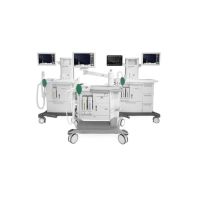Medication error is one of the major causes of people's death, estimated to cost around 42 billion US dollars globally every year[1]. Among them, administering with wrong drug is one of the most common types that results in death[2]. Safe medication is always the goal that medical professionals are pursuing.

There are different reasons that could cause nurses to confuse one drug with another, in which name confusion falls in the 5 major categories, accounting for 8.9% of such error according to the Taxonomy of Medication Errors of the National Coordinating Council for Medication Error Reporting and Prevention (NCCMERP)[2]. Thousands of medication name pairs have been confused or identified as having the potential risk of confusion due to their similar appearances or pronunciations[3]. For example, Nar can be confused with Nucuron, tolbutamide with terfenadine, and dopamine with dobutamine[4]. This could likely happen even when some of the pairs are clinically used in totally different departments in a hospital.

Besides that, labeling and packaging issues (particularly confusing instructions) were the other major culprits to blame for causing 33% of medication errors and 30% of consequential deaths[5]. These labels were made with similar or confused looks, or mistakenly put on the wrong containers.
To prevent the risk of drug errors caused by the above factors, methods such as Tall-man lettering and color-coded medication labels have been taken by many hospitals, which has shown positive effects.
Tall-man lettering
Tall-man lettering is a method of using upper-case lettering to help distinguish look-alike or sound-alike drug names, such as "predniSONE" and "predniSOLONE". Pharmaceutical manufacturers have been recommended by FDA to use such a mechanism to visually differentiate their drug names to avoid medication errors. The study found that tall-man lettering resulted in fewer errors when selecting a target drug from an array of choices[6].

Color-coding medication
Color-coding medication refers to the systematic, standard application of colors to help in identification and classification of drugs throughout the medication process, from prescription to administration. It was first introduced in some medical institutes and in 2015, the American Society of Anesthesiologists released a statement supporting the practice and application of color-coded medication labels. The color-coded syringe labels have shown to help enhance patient safety, especially in critical situations[4].

Given the constantly evolving demands for safer medication, it is necessary to think about how to better make use of the two methods to expand their clinical application and improve effects.
Giving wrong drugs could endanger patients, especially those high-alert drugs frequently used in intensive care unit, anesthesia and emergency department.
It is essential to apply tall-man lettering and color-coding medication to the clinical practices involved in departments above, especially when using infusion pumps to deliver drugs to patient. In the upcoming next generation of Mindray infusion pumps, both tall-man lettering technique and color-coding system are integrated, allowing nurses to easily identify drug names and associated colors on the pump’s screen, and accurately administer drugs to prevent medication errors.

As patient safety is the first and foremost goal that hospitals strive to achieve, safe medication will remain the focus of beside patient care. Stay tuned for Mindray’s new infusion pump and the technologies it adopts that are set to take the infusion safety and accuracy to the new level.
------------------------------------
Reference:
[1] Aitken, M., & Gorokhovich, L. (2012). Advancing theResponsible Use of Medicines: Applying Levers for Change. SSRN ElectronicJournal. doi: 10.2139/ssrn.2222541
[2] Phillips, J., Beam, S., Brinker, A., Holquist, C., Honig,P., Lee, L., & Pamer, C. (2001). Retrospective analysis of mortalitiesassociated with medication errors. American Journal of Health-SystemPharmacy, 58(19), 1835-1841. doi: 10.1093/ajhp/58.19.1835
[3] Filiatrault, P., & Hyland, S. (2009). Does Colour-CodedLabelling Reduce the Risk of Medication Errors? The Canadian Journal ofHospital Pharmacy, 62(2). doi: 10.4212/cjhp.v62i2.446
[4] Kothari, D., & Agrawal, J. (2013). Color coded syringelabels: A modification to enhance patient safety. BJA: British Journal OfAnaesthesia, 111 (eLetters). doi: 10.1093/bja/el_9759
[5] G, J., & T, G. (2010). Prescription Drug LabelingMedication Errors: A Big Deal for Pharmacists. Journal Of Young Pharmacists,2(1), 107-111. doi: 10.4103/0975-1483.62218
[6] Filik, R., Purdy, K., Gale, A., & Gerrett, D. (2004).Drug name confusion: evaluating the effectiveness of capital (“Tall Man”) lettersusing eye movement data. Social Science & Medicine, 59(12), 2597-2601.doi: 10.1016/j.socscimed.2004.04.008





























